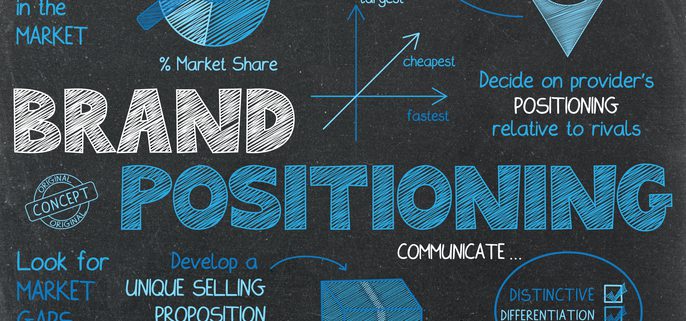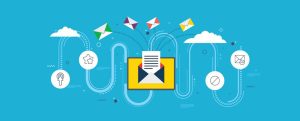Marketing has changed drastically over the years, and as a result, marketers are finding new ways to stay relevant in an increasingly competitive landscape. The need to catch the audience’s attention has never been more intense. One technique that has proven quite effective is using interactive content to drive up inbound marketing efforts. In the sections below, we’ll discuss how interactive content works, its benefits, and some strategies you can implement to boost your marketing.
What is Interactive Content?
Interactive content is an engaging form of content that requires the audience to participate. That means instead of just reading or watching something passively, the audience must interact with the content somehow.
This particular type of content is so effective because it creates a more immersive and personalized experience for the audience. With this type of content, your audience isn’t just consuming the content but being an active participants. This makes the content more memorable and enjoyable.
So, what are some examples of interactive content? Well, if you have ever been on your favorite social media platform and seen a post that compelled you to engage in one way or another, that is one perfect example. More often, this content comes in the form of a survey, social media polls, quizzes, games, or interactive maps.
Why Invest in Interactive Content?
Modern-day marketers leverage interactive and personalized content everywhere, from landing pages and blog posts to social media channels. Here’s how using this content will enhance your marketing plan:
Better Insights into Consumer Preferences
With interactive content, you can leverage the data obtained from quizzes, polls, and surveys to understand your audience’s engagement rates. This understanding helps you tailor your content to your audience’s preferences, resulting in more effective marketing and lead nurturing.
Boosts Conversion Rates
Since interactive elements demand user engagement, your target audience is more likely to take action. Brands like IKEA and Facebook have used interactive elements, such as virtual and augmented reality, to increase their reach and achieve higher click-through rates. If implemented correctly, interactive content can also be useful in your senior living marketing campaigns.

Unleashes Creativity
The opportunities for creativity with interactive content are limitless. With these elements, you can create a unique brand experience that sets you apart from the competition. Many interactive and evergreen content pieces have reusable value, meaning consumers may return to engage with the content multiple times, driving continued engagement.
Improves Audience’s Experience
Interactive and highly personalized content can enhance a prospective customer’s experience by providing useful information or tools that can help solve their problems. By providing valuable interactive resources, you can strengthen your authority in your industry and build a more loyal audience.
Better Brand Awareness
Interactive, branded content can help drive brand awareness by providing viewers with a unique, memorable experience. As more people find value in your content, they’re more likely to share it on social media, generating word of mouth and referrals.
Levels up Your SEO Game
Interactive content can help improve your website’s SEO by encouraging visitors to engage with it. As a result, the time visitors spend on your site increases, signaling to search engines that your content is engaging, informative, and of high value.
Interactive Content Strategies to Consider
If you want to enhance your inbound marketing strategy, tap into the various interactive content strategies. From polls to interactive landing pages, these strategies can help engage consumers, collect information, and increase sales. Here’s what to implement and how:
Quizzes/Surveys
Quizzes or surveys are fun and engaging forms of interactive and personalized content that are becoming increasingly popular in inbound marketing. They are commonly used to educate, engage and entertain the audience, and when done creatively, they have a good chance of going viral.
For instance, social media polls and surveys offer an effective way to encourage audience participation on a given topic. The quizzes can capture valuable insights into the audience’s maturity in the subject matter and can help boost your inbound marketing strategies.
Interactive Infographics
Approximately 1 in 3 marketers admit that attracting user intention is their biggest marketing challenge. That is why interactive infographics have become increasingly popular in recent years. Unlike static or traditional infographics, interactive types use buttons, statistics, and quizzes to grab the audience’s attention and engage them deeper.
 These infographics keep the readers on your site longer, increasing the chances that they will convert into leads or customers. The interactive elements also make your content more shareable, which can lead to increased brand awareness and improved search engine rankings.
These infographics keep the readers on your site longer, increasing the chances that they will convert into leads or customers. The interactive elements also make your content more shareable, which can lead to increased brand awareness and improved search engine rankings.
And while creating interactive infographics may require more time and resources than traditional infographics, the benefits can be worth it. By providing an immersive experience for your audience, you build a stronger relationship and stand out in a crowded digital landscape.
Interactive Landing Pages
In today’s highly competitive digital landscape, interactive landing pages have become a crucial element of inbound marketing. The goal of a landing page is to generate conversions. Adding interactivity to landing pages can trigger a visitor’s desire, increasing engagement and the likelihood of conversion.
Interactive landing pages enable visitors to engage and participate, creating a unique user experience that differentiates your website from competitors. Thoughtfully incorporating visual and animated content will enhance your landing pages. This increases click-through rates and ultimately generates more leads.
The above techniques are a few interactive content marketing strategies you can implement in your business. Other options include the use of interactive tools such as calculators, interactive PDFs, interactive videos, interactive presentations, etc.
Bottom Line
For the longest time, inbound marketing has become integral to nearly all major businesses and industries. The simple reason for this is that, unlike advertising, inbound marketing focuses on creating value for the prospect and building long-term relationships. However, competition is quickly catching up, and marketers turn to interactive elements to make their marketing techniques more creative and innovative.
When creating interactive content, it’s vital to take a customer-centric approach. That means understanding the audience’s needs and preferences and creating content and experiences that speak directly to them.















 Let’s imagine someone first discovered your company’s offer on Instagram, then joined your email list, and finally made a purchase on Amazon. It’s tempting to give all the credit to Amazon just because that’s where the sale happened. But that overlooks how Instagram sparked the initial interest and how your emails kept them engaged. If you only focus on that last
Let’s imagine someone first discovered your company’s offer on Instagram, then joined your email list, and finally made a purchase on Amazon. It’s tempting to give all the credit to Amazon just because that’s where the sale happened. But that overlooks how Instagram sparked the initial interest and how your emails kept them engaged. If you only focus on that last 






 These infographics keep the readers on your site longer, increasing the chances that they will convert into leads or customers. The interactive elements also make your content more shareable, which can lead to increased brand awareness and improved search engine rankings.
These infographics keep the readers on your site longer, increasing the chances that they will convert into leads or customers. The interactive elements also make your content more shareable, which can lead to increased brand awareness and improved search engine rankings.







